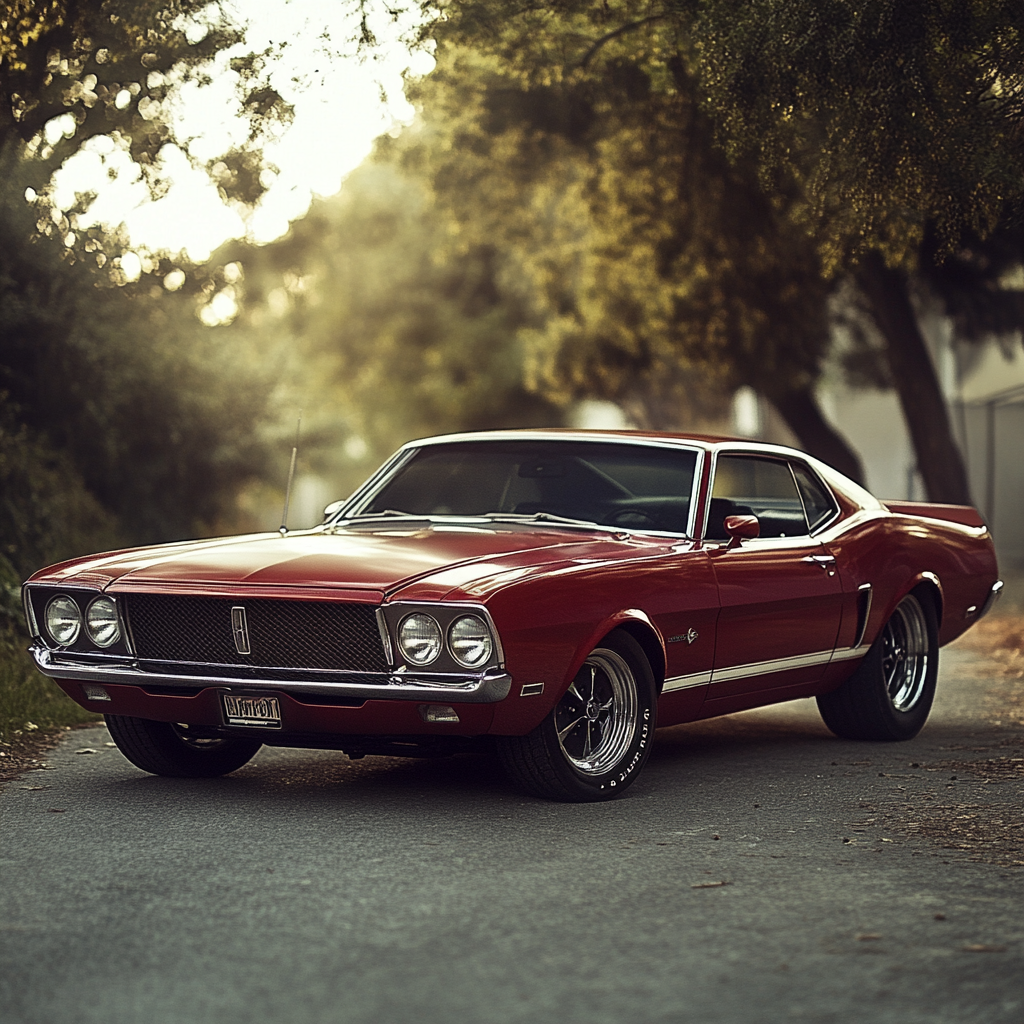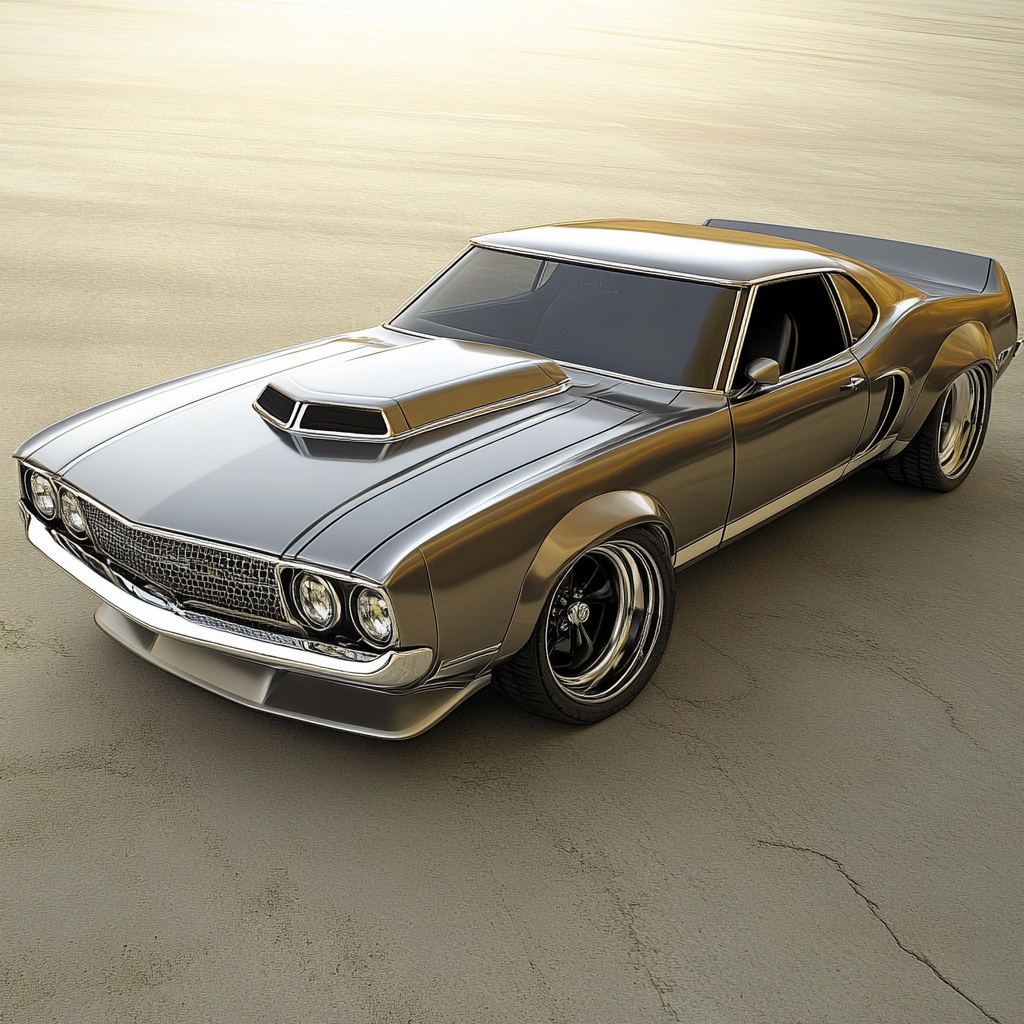Mike Savage in New Canaan, CT Takes This American Classic for a Spin
The Mercury Cougar occupies a unique space in the history of American muscle cars. Known for its sleek design, powerful engines, and luxurious features, the Cougar quickly became a symbol of performance and style.
Originally positioned between the classic Ford Mustang and Thunderbird, this car offered a blend of power and sophistication that made it an instant hit with car enthusiasts.
I recently detailed my love for the Dodge Challenger. Let’s take a deep dive into the history, features, and evolution of the Mercury Cougar and see how it stands up to that car.
The Birth of the Mercury Cougar (1967–1970)
The Mercury Cougar debuted in 1967, during the golden age of muscle cars. It was introduced as Mercury’s answer to the wildly popular Ford Mustang, but it wasn’t just a carbon copy of its cousin.
While the Mustang focused more on affordability and performance, the Cougar emphasized luxury, comfort, and a slightly more refined driving experience, earning it the tagline “The Man’s Car.”
Designed on the same platform as the Mustang, the Cougar stood out with its longer wheelbase and unique styling elements. The most iconic feature of the first-generation Cougar was its hideaway headlights, which were concealed behind a full-width grille, giving the car a sleek, predatory look, as if it was ready to pounce at any moment. The sequential rear turn signals, a touch of elegance and futuristic flair, became a hallmark of the Cougar’s design.
The Cougar was powered by a range of V8 engines, from the base 289-cubic-inch engine to the potent 390-cubic-inch “Marauder” V8, delivering up to 335 horsepower.
By offering both luxury and muscle in one package, the Cougar struck a balance that appealed to a different type of performance car buyer—one who wanted comfort along with speed.
The Cougar Becomes a True Muscle Car (1971–1973)
By the early 1970s, the Cougar embraced the muscle car movement more overtly, especially with the introduction of high-performance models like the Cougar GT and XR-7. The 1971 redesign made the Cougar larger and heavier, as many muscle cars were in response to federal safety and emission regulations. The new models also featured a more aggressive stance, with wider grilles, larger hoods, and bold sculpted lines.
The engine lineup during this period included big-block engine options like the 429 Cobra Jet V8, which could push the Cougar’s performance to muscle-car levels worthy of the era. It was during this time that Mercury also experimented with the Cougar’s image in motorsports. The Cougar XR-7 was used in Trans-Am racing, further solidifying its reputation as a performance car, though it never achieved the same racing glory as its Mustang sibling.
Unfortunately, by the mid-1970s, the golden age of muscle cars was coming to an end. Stricter emissions standards, rising insurance rates, and the 1973 oil crisis led to a downturn in demand for gas-guzzling high-performance cars. The Cougar, like many muscle cars of its time, started shifting away from raw power toward comfort and luxury.

The Shift Toward Personal Luxury (1974–1979)
The 1974 redesign marked a dramatic shift for the Cougar. Mercury no longer positioned it as a muscle car but rather as a “personal luxury” coupe. This was in line with market trends, as consumer preferences were moving toward larger, more comfortable cars with better fuel efficiency. The once-aggressive lines of the Cougar softened, and the car grew in size, now based on the mid-sized Ford Torino platform.
The emphasis was now on luxury features such as plush interiors, vinyl roofs, power windows, and air conditioning. The performance engine options were gradually phased out in favor of smaller, more efficient V8s.
During this time, the Cougar remained popular, but it had lost the muscle car swagger that defined its earlier years.
The Downsized Cougar (1980–1988)
As the 1980s rolled in, the Mercury Cougar continued its evolution as a luxury coupe. In 1980, the Cougar was downsized, reflecting the industry-wide push for more fuel-efficient vehicles.
The new Cougar was built on the Fox platform, shared with the Ford Thunderbird and Mustang. While it was still marketed as a personal luxury car, Mercury attempted to inject some performance back into the Cougar line by offering turbocharged 4-cylinder engines, though these did not bring the Cougar back to its muscle car roots.
In 1983, a redesign gave the Cougar a more aerodynamic look, and the XR-7 trim was reintroduced with a turbocharged engine.
However, the Cougar’s focus remained primarily on comfort and luxury, appealing to an older and more conservative buyer than its Mustang sibling.
The Return to Performance (1989–1997)
The 1989 redesign represented a significant turning point for the Cougar. Built on the same MN12 platform as the Thunderbird, the new Cougar featured an independent rear suspension and a more sophisticated chassis, which improved handling and ride quality.
The V6 and V8 engine options, combined with rear-wheel drive, gave the Cougar the kind of performance it hadn’t seen in years. The XR-7 even offered a supercharged V6, capable of producing 210 horsepower.
By the 1990s, the Cougar had become a more balanced performer, offering a mix of performance and luxury. However, it still struggled to reclaim its muscle car heritage. The rising popularity of SUVs and the waning interest in personal luxury coupes ultimately led to the discontinuation of the Cougar in 1997.
The Final Generation and the End of the Road (1999–2002)
In 1999, Mercury revived the Cougar nameplate, but the new model bore little resemblance to its predecessors. This final generation was a front-wheel-drive sports coupe built on a Ford Mondeo platform and targeted at younger buyers. With a focus on affordability and fuel economy, the 1999-2002 Cougar was a far cry from the muscle car roots of the original.
Despite its stylish design and agile handling, the new Cougar couldn’t capture the hearts of performance enthusiasts. With sales declining and the Mercury brand itself on shaky ground, production of the Cougar ended in 2002, marking the end of an era.
Legacy of the Mercury Cougar
The Mercury Cougar’s journey through the decades is a testament to the changing tastes of American car buyers and the evolution of the auto industry. From its origins as a stylish and powerful muscle car to its transformation into a luxury coupe, the Cougar has always been a car that blended performance and comfort in unique ways.
Today, first-generation Cougars are highly sought after by collectors and enthusiasts, who admire their blend of style, performance, and rarity compared to the more common Mustangs and Camaros of the era.
As a symbol of Mercury’s performance history and its contribution to the muscle car phenomenon, the Cougar remains an important chapter in the book of American automotive legends.
Fun Facts about the Mercury Cougar:
- The 1967 Mercury Cougar was named Motor Trend’s “Car of the Year.”
- The Cougar was the first American production car to feature hidden headlights, a design element that added to its sleek appearance.
- The Cougar XR-7 was featured in the James Bond film On Her Majesty’s Secret Service (1969), driven by Bond’s love interest, Tracy di Vicenzo.
Whether you remember it as a muscle car or a luxurious cruiser, the Mercury Cougar’s place in automotive history is secure. It may have evolved through several forms, but its spirit remains tied to the golden era of American muscle cars.
ABOUT MICHAEL SAVAGE OF NEW CANAAN, CT
Michael Savage from New Canaan is the Founder of 1-800 Accountant that helps businesses with their accounting services and needs through cutting-edge technology and customer support. He runs the company alongside CEO Brendon Pack.
In his spare time, Savage enjoys creating unique koi ponds, collecting Michael Jordan sneakers, vintage Lego sets, and admiring muscle cars and unique pop art. He and his wife also spearhead the Savage-Rivera foundation to help impoverished families in Honduras.
